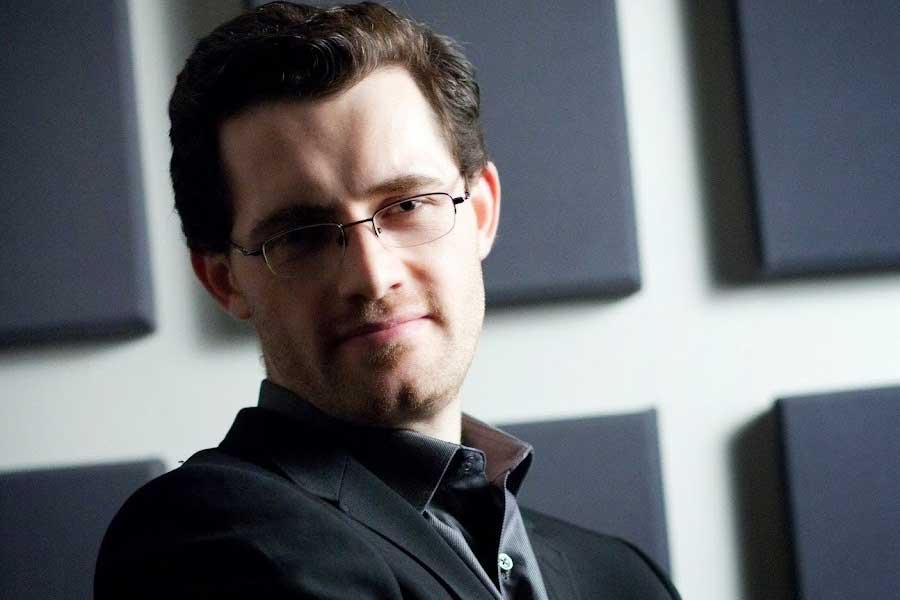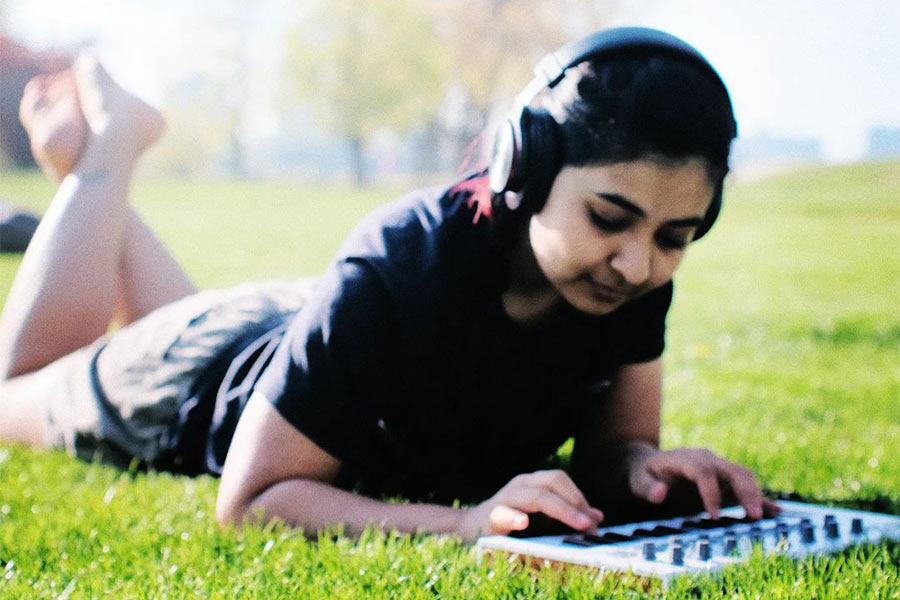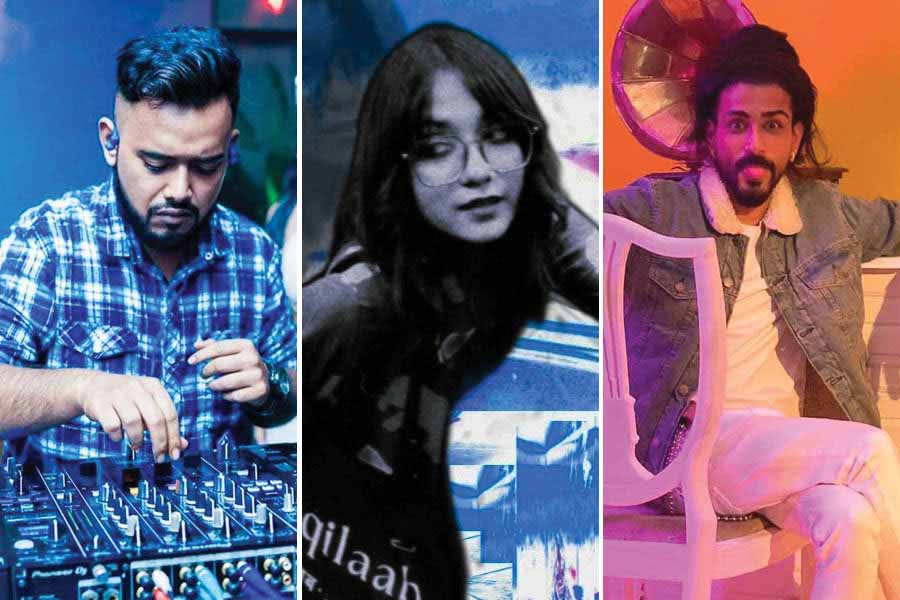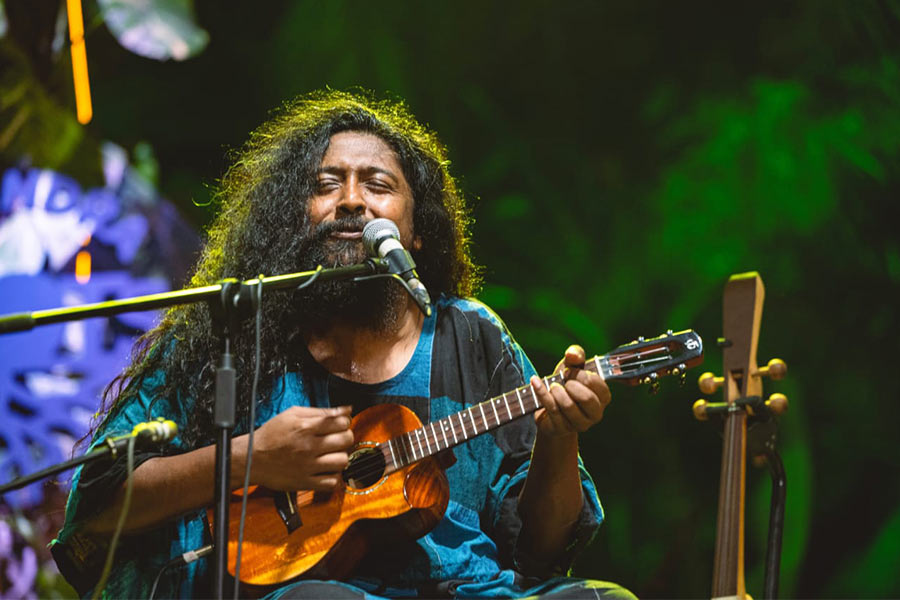“Jack of all trades, master of none” is how Shireen Ghosh describes herself. The multifaceted musician is a composer whose passion for music knows no bounds. While she is a member of indie band Whale In The Pond, her independent work involves a lot of experimenting, using instruments and gear in a non-conventional manner. Some of her recent work involved releasing Pink and Midnight Falls with her band, working on ads and intros to a podcast, and even lending her skills to video games.
The young talent was back in the city after three years post moving to Los Angeles and My Kolkata checked in with the artiste to catch up on her music.
My Kolkata: Hi Shireen, good to see you after so long! What brought you back to Kolkata?
Shireen Ghosh: I’m glad to say that I lived, slept, ate, and breathed music during my visit! I played a set at Parklife India, showcasing some of the incredible music technology that has consumed my life as a composer. Using an audio programming language, I built sounds from scratch, and generated a chord progression, which I then jammed along to. It’s very interesting because since the sequences are randomly generated, I do not know what is coming next so I have to adapt and improvise on the spot.
Apart from that, I recorded a lot of music ideas inspired by various parts of south Kolkata. I also collaborated on a music video with Dolinman (Diptanshu Roy), Paloma Majumder, and my Whale in the Pond bandmate, Sagnik Samaddar. I spent a lot of time with my former music students at Responsible Charity’s Slumjam programme.
Your talents are quite extraordinary. As a multi-instrumentalist, how do you perceive the role of instruments in your creative process?
As a composer, I view instruments more as tools, a means to an end. My real goal is to deepen my understanding of, and dedication to, this dark and nebulous void that we call music. I find it inspiring to have a lot of different instruments around me, but I prefer to think of them in terms of the roles they can play in serving the enigmatic essence of music, rather than “I play X number of instruments”.
The reels of your song creations, especially the latest one recorded in an airport layover, are gaining attention. How did you put it together?
I had a six-hour layover in Dubai and needed a way to pass the time. After being away from Kolkata for three years, Moheener Ghoraguli’s Ghore Pherar Gaan was stuck in my head. I was playing it while waiting for my flight when I got the idea to record it. I was carrying a ukulele, which is usually a very high-pitched instrument, and normally used for cutesy upbeat love songs. But I wanted to do something a bit more complex, so I had one layer of the instrument in its regular range, and one layer where I tuned it way down. That low tuning sounds unnatural because the strings become loose and flappy, and the intonation of the instrument starts to fall apart — I wanted to use that unsettled sense to my advantage.
I used a cool gadget called a contact microphone for recording. It’s a little metal disc that sticks to surfaces, picking up vibrations from whatever it’s in contact with (unlike regular microphones that rely on air transmission to pick up sound waves). Using this was ideal for recording in an airport because it blocks out noise like announcements and crowds! I even tried something fun by sticking it on my throat to capture vibrations from my larynx — I hummed some harmonies as a base layer, and then added effects to it.
It’s been a couple of years since you left Kolkata for Los Angeles. How have you been keeping up your work with Whale In The Pond?
It’s been a wild ride, but we released two singles in 2023 — Pink, and Midnight Falls. We have more ideas planned, and hopefully we can manage to see them through. Of course, it’s hard to figure out how to keep going when I can only collaborate remotely. It was already hard to coordinate our schedules when all four of us were in the same city, and now there’s this extra element to watch out for! But doing the mixes and post-production has always been my favourite part of working with Whale, so I’m glad that I can keep doing it.
The music video of Pink has a great vibe. How did you create that nostalgic Kolkata-Chicago concept?
Most of the credit goes to my bandmate Sourjyo Sinha, who conceptualised the video and put the team together for the shoot. Directed by Dhee Majumder and sponsored by Chaitown Community, big supporters of ours, the video has this beautiful concept. Sourjyo had this idea of taking a cup of tea to Tajpur Beach and floating it away in the ocean, and it eventually floats all the way to Lake Michigan in Chicago, where I pick it up.
We had to figure out the physics of making tea cups float. An unexpected hurdle in Chicago was the icy cold water of Lake Michigan. My friends there, John Betten and Bharat Raman, helped shoot the video, and the three of us were all shivering risking hypothermia for this music video. So, I hope the result was worth it!
Being a musician, you’ve also contributed to films shortlisted for a BAFTA student award, created intros for Hum Hindustani Poetry podcast, and done sound design for plays. While these projects are music-oriented, each demands a different approach. How do you navigate such a vast variety of creative projects?
This is my passion! Art projects are like complex puzzles, and I love figuring out how sound fits in. Understanding the project’s purpose is key. For instance, in the BAFTA Yugo-shortlisted film Priyo Ami, directed by my good friend Suchana Saha from Kolkata, sound had to function like music without actually being music. It’s crucial to grasp the scope of the puzzle first. Sound in media can serve various roles, from background support to adding depth, following action, or even being a distraction. Understanding these roles and the evocative power of different instruments is essential.
In LA, you worked with Austin Wintory, a big name in the video gaming world. Can you share your experience working with him on the Lego Fortnite project?
I’m incredibly fortunate to work on several of Austin’s projects as his regular assistant. Lego Fortnite was the first project he entrusted me with. I got to design a lot of synthesiser patches and other sounds for the game, as well as build sample libraries around a violin and cello recording session. Austin’s vision for the theme and the score was about using the idea of Lego to represent the concept of creativity itself — a vast and open-ended vision. As abstract as that sounds, it needed a clear aesthetic and rules to be effective as a score. So, the sounds I created had to align with that philosophy and seamlessly belong to the world of Lego Fortnite.

American composer, Austin Wintory
It’s also been fascinating to help out with Stray Gods: The Roleplaying Musical, which got nominated for a Grammy this year!
Who are some other composers you have been able to work with?
I’ve also had the opportunity to work as a tech assistant to Hollywood composers Mac Quayle and Tom Howe. Getting to see the workflows and systems that all these different composers use, as well as attending their recording sessions, has been incredibly insightful.
How else are you going to be wowing us in 2024?
I want to dive back into making music education videos! I used to do it a lot at one time, and sharing knowledge and experiences is very important to me. Additionally, I’m keen on exploring the possibility of hosting workshops on generative synthesis and interactive adaptive music. Music technology offers exciting artistic potential, and it’s a subject that can seem inaccessible and weird, even though several of the tools are free with open-source software and don’t require special equipment or gear.
Coming back to Kolkata this time formed a new circuit in my brain, that makes me want to create things more than I ever have before. There are a couple of very exciting collaborations in the works, as well as a couple of film projects, and the year has only just begun.


